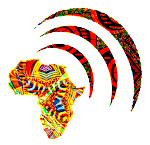Ethiopia has Africa’s largest livestock population
Most of Ethiopia's estimated 71 million sheep and goats are raised by small farmers who used them as a major source of meat and household income. When food prices rise, as seen during the 2011 drought, poor households are forced to choose between selling livestock to maintain current consumption levels or risk malnutrition to protect future income sources.
Ethiopia has Africa’s largest livestock population
 |
| Ethiopia has Africa’s largest livestock population |
With an estimated 52 million
cattle, 36 million sheep, 35 million goats and 5 million camels in 2009, Ethiopia has Africa’s largest livestock population. Pastoralist communities are highly
dependent on income from livestock to pay for food, health services, and school
fees.
When food prices rise, as seen during the 2011 drought, poor households are forced to choose between selling livestock to maintain current consumption levels or risk malnutrition to protect future income sources.
When food prices rise, as seen during the 2011 drought, poor households are forced to choose between selling livestock to maintain current consumption levels or risk malnutrition to protect future income sources.
Almost the entire rural
population is involved in some way with animal husbandry, whose role included
the provision of draft power, food, cash, transportation, fuel, and, especially
in pastoral areas, social prestige. In the highlands, oxen provided draft power
in crop production. In pastoral areas, livestock formed the basis of the
economy.
Ethiopia has great potential
for increased livestock production, both for local use and for export. However, the expansion was constrained by inadequate nutrition, disease, a lack of support
services such as extension services, insufficient data with which to plan
improved services, and inadequate information on how to improve animal
breeding, marketing, and processing.
The high concentration of animals in the
highlands, together with the fact that cattle are often kept for status,
reduces the economic potential of Ethiopian livestock.
Most of Ethiopia's estimated 71
million sheep and goats are raised by small farmers who used them as a major
source of meat and cash income. About three-quarters of the total sheep flock
is in the highlands, whereas lowland pastoralists maintain about three-quarters
of the goat herd. Both animals have high sales value in urban centers,
particularly during holidays such as Easter and New Year's Day.
Did you know?
Almost half
of the agricultural workers in sub-Saharan Africa are women
Facts About Animals of Africa
- Ghost towns and wild horses of the African Namib Desert
- Africa Earth Facts
- Giraffes Love Acacia Trees
- Legends Abound About the Marula Tree Fruit and Oil
- What Are Africa's Big Five Animals
- Ngorongoro Crater African Garden of Eden

 Since 2007
Since 2007


